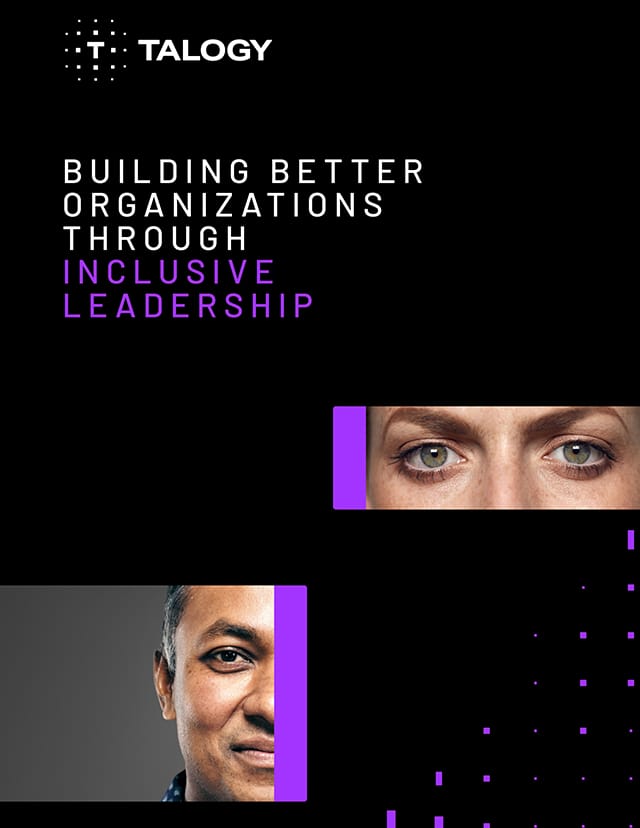Written by Amie Lawrence, PhD, former Director of Global Innovation
Over the past few years, the topic of diversity, equity, and inclusion (DEI) has been amplified by events and movements like #MeToo and Black Lives Matter. Diversity and social justice are reaching new levels within social consciousness and are beginning to significantly influence business decisions. They have become important factors in how employees and candidates evaluate the attractiveness of employers.
Companies that focus on fairness and take steps to increase diversity have a better chance of attracting and retaining top talent. Additionally, researchers have demonstrated positive business outcomes for organisations with diverse workforces, especially those with diversity within their leadership teams and board rooms (Hunt, Prince, Dixon-Fyle, & Dolan, 2020).
According to a survey conducted by Salesforce (Salesforce, 2017), 80% of business professionals believe businesses have a responsibility to make a positive societal impact, but only 36% reported that their organisations were actively working to achieve diversity. While many organisations would readily admit that they want to focus on DEI and believe it to be valuable to the overall health of the organisation, they don’t know what to do or where to start.
How to create a culture of allyship
When making any large organisational shift, it is important to have a clear vision for the end goal. What is organisational success when it comes to DEI? There are numerous opportunities to address equity and inclusion within HR processes and decision making, but those changes will not be successful if the organisational values system and messaging are not cohesive.
Each individual within an organisation is likely to be in a different place in terms of their understanding, awareness, and commitment to DEI. Creating a consistent vision and setting expectations will help guide behaviour as employees work to support the initiative. A framework that applies nicely to this issue of differing levels of commitment is that of allyship. In this framework, the end goal is to become a true ally for diversity, equity, and inclusion by actively advocating and taking action on behalf of DEI.
Allyship is not a new concept to those familiar with DEI literature. What we like about this model is that it recognizes that becoming an ally is a journey that starts with awareness and ends with individuals playing a more active role in championing change.
Below, we describe our ABC Model of allyship and its three phases:
Appreciate inclusion
Allyship begins with an awareness of the issues and experiences of disenfranchised groups. It is an acknowledgement of the differences and an openness to learning. Individuals in this phase are identifying privilege and seeing how it impacts and contributes to systemic bias within society and their organisation.
Unconscious bias training is an intervention meant to help people begin their journey by raising awareness and alerting them to behaviours that can be perceived as microaggressions. This phase requires some questioning, mental flexibility, and willingness to adjust one’s thinking about the nature of the environment for everyone within it.
Build inclusive climate
The second phase of allyship moves from individual awareness and openness to the demonstration of behaviours. Individuals in this phase are helping to build an inclusive environment by gathering diverse perspectives, empathising, actively listening, communicating transparently, and showing humility and authenticity.
These behaviours, especially when modeled by leaders, build an environment of trust and psychological safety. Individuals and teams are more open, creative, and effective when in a supportive and inclusive environment. At this stage, individuals tend to support DEI within their scope of influence and may feel uncomfortable formally speaking out or challenging organisational policies.
Champion change
The last phase of allyship is one of advocacy. Individuals at this stage take their behavioural commitment to another level. They tend to look for opportunities to affect change formally and informally. To be successful at this stage, individuals need to be courageous, action-oriented, resilient, and willing to commit to large change effort.
Organisational change does not happen quickly or easily, but it won’t happen at all without individuals in this phase. Ideally, the entire organisation is full of allies, working together because the climate supports all of these behaviours. At a minimum, organisational leaders should all achieve allyship to be able to model, identify opportunities, and use their power and status to push forward changes.
Creating an inclusive culture and climate is a large undertaking and requires the organisation to tackle it by looking at all internal processes and at all levels within the organisation. Before embarking on such a change, it’s important to consider where your employees and leaders are within their journey toward allyship. Without allies leading the efforts, organisational messaging and behaviour can be incongruent and inconsistent.
Additionally, organisational interventions are likely to be received differently by employees at different phases. When choosing interventions, consider those that help move people along their allyship journey. Raising awareness alone is not going to create an ally. Look at the big picture and focus on the activities and initiatives that create allies – allies affect change and that change leads to an inclusive culture.
Sources:
Salesforce (2017). The Impact of Equality and Values Driven Business. https://c1.sfdcstatic.com/content/dam/web/en_us/www/assets/pdf/datasheets/salesforce-research-2017-workplace-equality-and-values-report.pdf
Hunt, V., Prince, S., Dixon-Fyle, S., & Dolan, K. (2020). Diversity Wins: How inclusion matters. https://www.mckinsey.com/featured-insights/diversity-and-inclusion/diversity-wins-how-inclusion-matters



